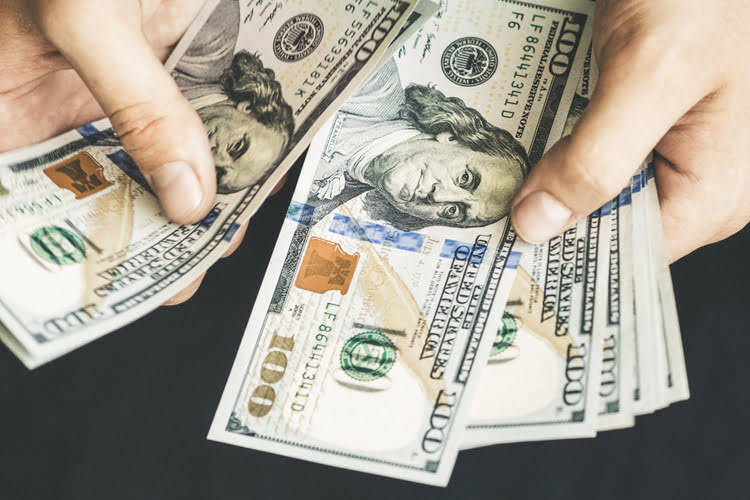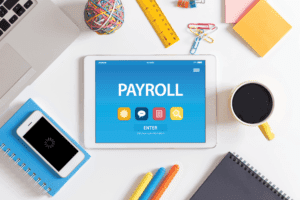
So, in the first year, the company would record a depreciation expense of $4,000. As a result, at the end of the first year, the book value of the machinery would be reduced to $6,000 ($10,000 – $4,000). Our solution has the ability to record transactions, which will be automatically posted into the ERP, automating 70% of your account reconciliation process. Accountingo.org aims to provide the best accounting and finance education for students, professionals, teachers, and business owners. Therefore, it is more suited to depreciating assets with a higher degree of wear and tear, usage, or loss of value earlier in their lives. Note that the double-declining multiplier yields a depreciation expense for only four years.
- The company estimates that its useful life will be five years and its salvage value at the end of its useful life would be $1,250.
- So your annual write-offs are more stable over time, which makes income easier to predict.
- Proponents of this method argue that fixed assets have optimum functionality when they are brand new and a higher depreciation charge makes sense to match the fixed assets’ efficiency.
- They also report higher depreciation in earlier years and lower depreciation in later years.
- Simultaneously, you should accumulate the total depreciation on the balance sheet.
- To use the template above, all you need to do is modify the cells in blue, and Excel will automatically generate a depreciation schedule for you.
Declining Balance Method of Assets Depreciation
- The decrease in value of the asset affects the balance sheet of a business or entity, and the method of depreciating the asset, accounting-wise, affects the net income, and thus the income statement that they report.
- In summary, the choice of depreciation method depends on the nature of the asset and the company’s accounting and financial objectives.
- All information prepared on this site is for informational purposes only, and should not be relied on for legal, tax or accounting advice.
- In this scenario, we can use the formula to calculate the depreciation expense for the first year.
Estimating salvage value accurately is essential for financial planning and tax compliance. Although the method does not directly include salvage value https://www.bookstime.com/articles/horizontal-analysis in annual calculations, it becomes relevant in the final adjustment. For instance, the IRS requires compliance with the Modified Accelerated Cost Recovery System (MACRS), which may involve salvage value considerations for tax purposes.
Tax lives and methods
- Accelerated depreciation methods, such as double declining balance (DDB), means there will be higher depreciation expenses in the first few years and lower expenses as the asset ages.
- You can connect with a licensed CPA or EA who can file your business tax returns.
- For example, the depreciation expense for the second accounting year will be calculated by multiplying the depreciation rate (50%) by the carrying value of $1750 at the start of the year, times the time factor of 1.
- Since public companies are incentivized to increase shareholder value (and thus, their share price), it is often in their best interests to recognize depreciation more gradually using the straight-line method.
- The beginning of period (BoP) book value of the PP&E for Year 1 is linked to our purchase cost cell, i.e.
- If you’ve taken out a loan or a line of credit, that could mean paying off a larger chunk of the debt earlier—reducing the amount you pay interest on for each period.
- DDB is best used for assets that lose value quickly and generate more revenue in their early years, such as vehicles, computers, and technology equipment.
It involves more complex calculations but is more accurate than the Double Declining Balance Method in representing an asset’s wear and tear pattern. This method balances between the Double Declining Balance and Straight-Line methods and may be preferred for certain assets. Through this example, we can see how the DDB method allocates a larger depreciation expense in the early years and gradually reduces it over the asset’s useful life. This approach matches the higher usage and faster depreciation of the car in its initial years, providing a more accurate reflection of its value on the company’s financial statements. Sum-of-years-digits is a spent depreciation method that results in a more accelerated write-off than the straight-line method, and typically also more accelerated than the declining balance method. Under this method, the annual depreciation is determined by multiplying the depreciable cost by a schedule of fractions.
Advance Your Accounting and Bookkeeping Career

This is preferable for businesses that may not be profitable yet and, therefore, may be unable to capitalize on greater depreciation write-offs or businesses that turn equipment assets over quickly. The method ensures the book value does not drop below the salvage value, if any. In the final years, businesses must adjust calculations to ensure the book value aligns with the salvage value at the end of the asset’s useful life. Understanding the tools available for double declining balance depreciation can greatly enhance your financial adjusting entries management skills. By utilizing calculators, templates, and educational resources, you can make informed decisions that benefit your business.

Depreciation Base of Assets
- Calculating the annual depreciation expense under DDB involves a few steps.
- To calculate the double-declining depreciation expense for Sara, we first need to figure out the depreciation rate.
- Double Declining Balance Depreciation is a way to calculate how much value an asset loses over time.
- A CP504 is one of your last chances to repay your IRS balance without triggering further penalties, collection action, levies, and even liens on your property.
However, note that eventually, we must switch from using the double declining method of depreciation in order for the salvage value assumption to be met. Since we’re multiplying by a fixed rate, there will continuously be some residual value left over, irrespective of how much time passes. For reporting purposes, accelerated depreciation results in the recognition of a greater depreciation expense in the initial years, which directly causes early-period profit margins to decline.

Example of DDB Depreciation

In many countries, the Double Declining Balance Method is accepted for tax purposes. However, it is crucial to note that tax regulations can vary from one jurisdiction to another. Therefore, businesses should verify the specific tax rules and regulations in their region and consult with tax experts to ensure compliance. If the double-declining depreciation rate is 40%, the straight-line rate of depreciation shall be its half, i.e., 20%. Double-declining depreciation charges lesser depreciation in the later years of an asset’s life.
When Do Businesses Use the Double Declining Balance Method?

However, in most countries the life is based on business experience, and the method may be chosen from one of several acceptable methods. The following examples show the application of the double and 150% declining balance methods to calculate asset depreciation. Because the equipment has a useful life of only five years, it is expected to lose value quickly in the first few years of use. For this reason, DDB is the most appropriate depreciation method for this type of asset. DDB double declining balance method depreciation is less advantageous when a business owner wants to spread out the tax benefits of depreciation over a product’s useful life.
